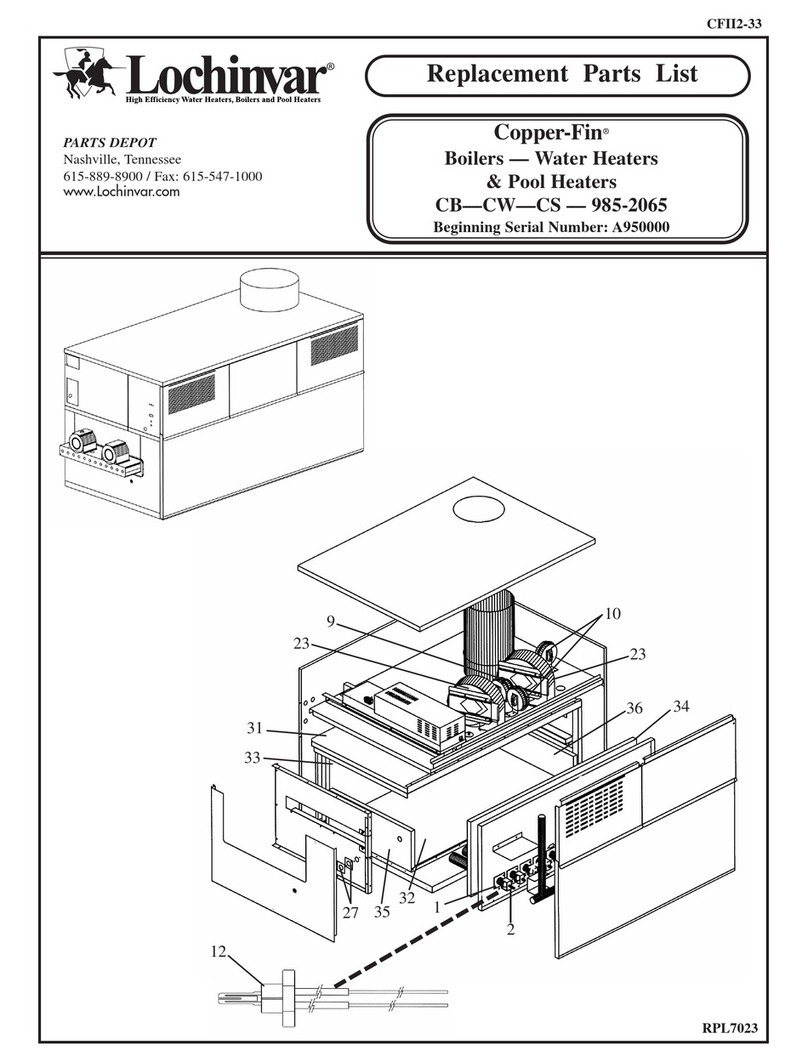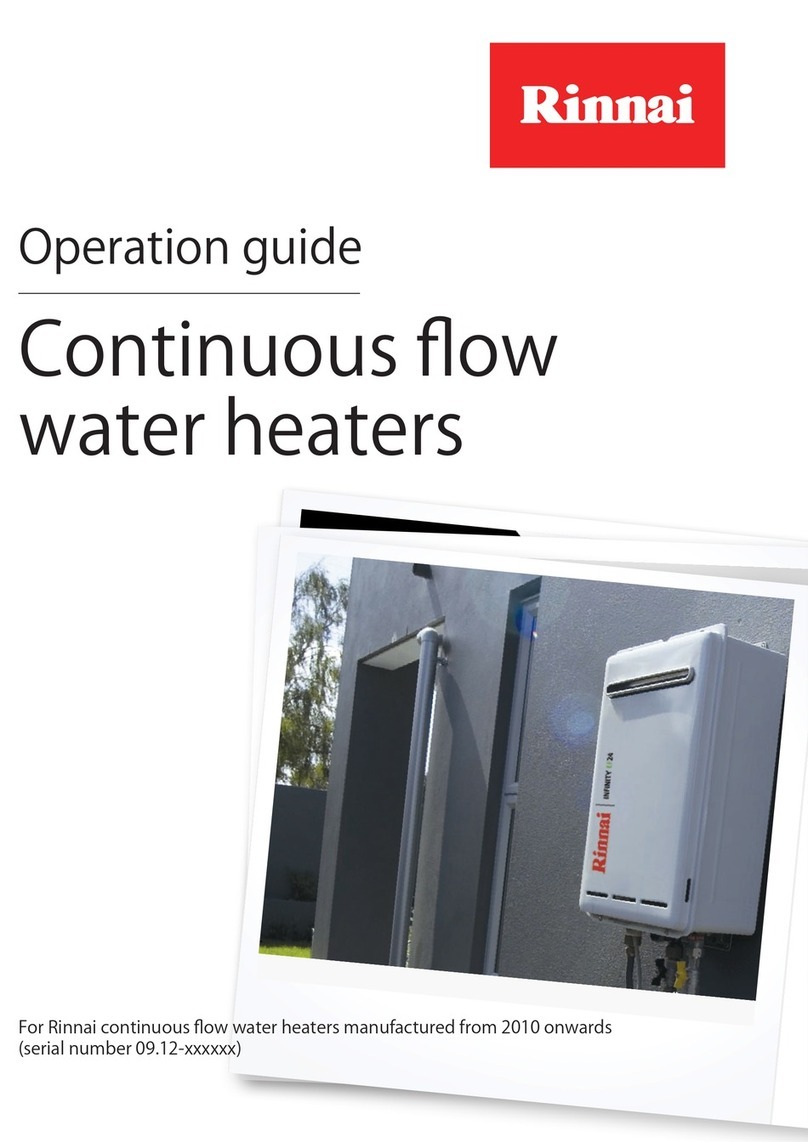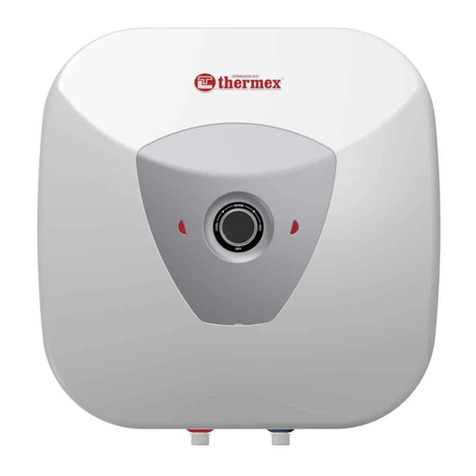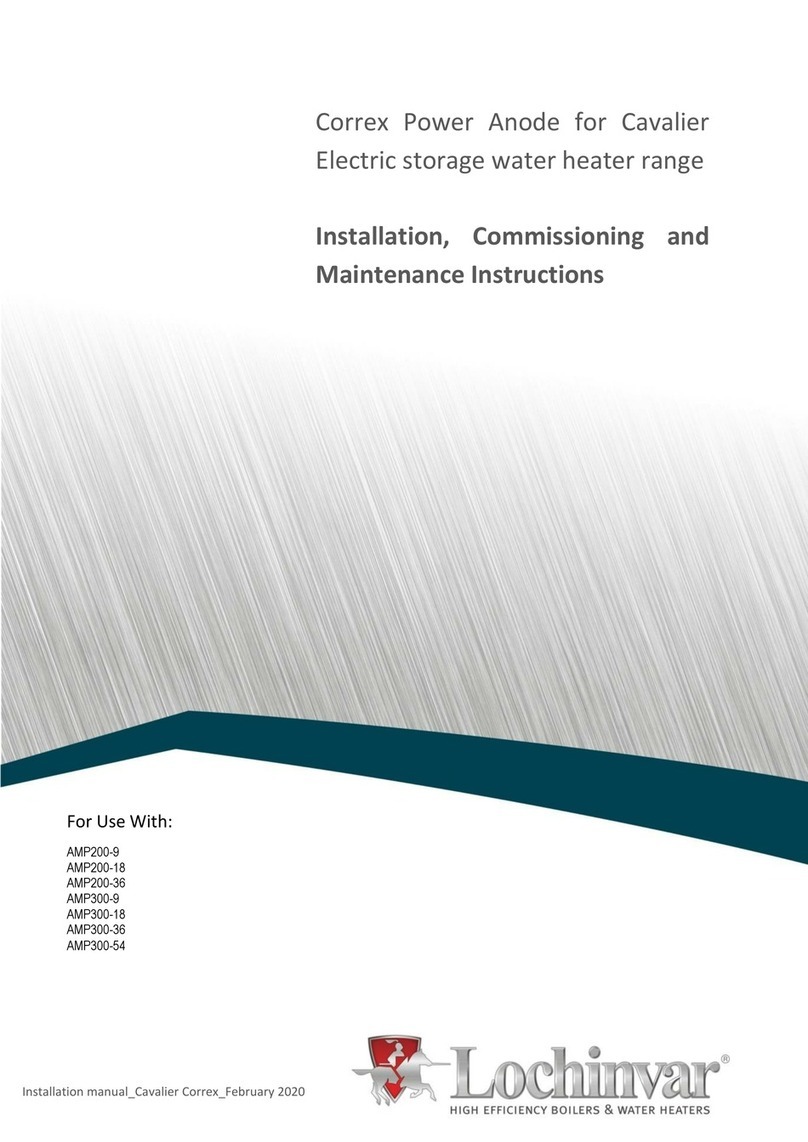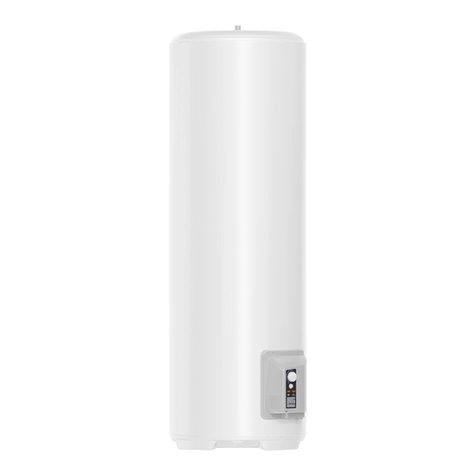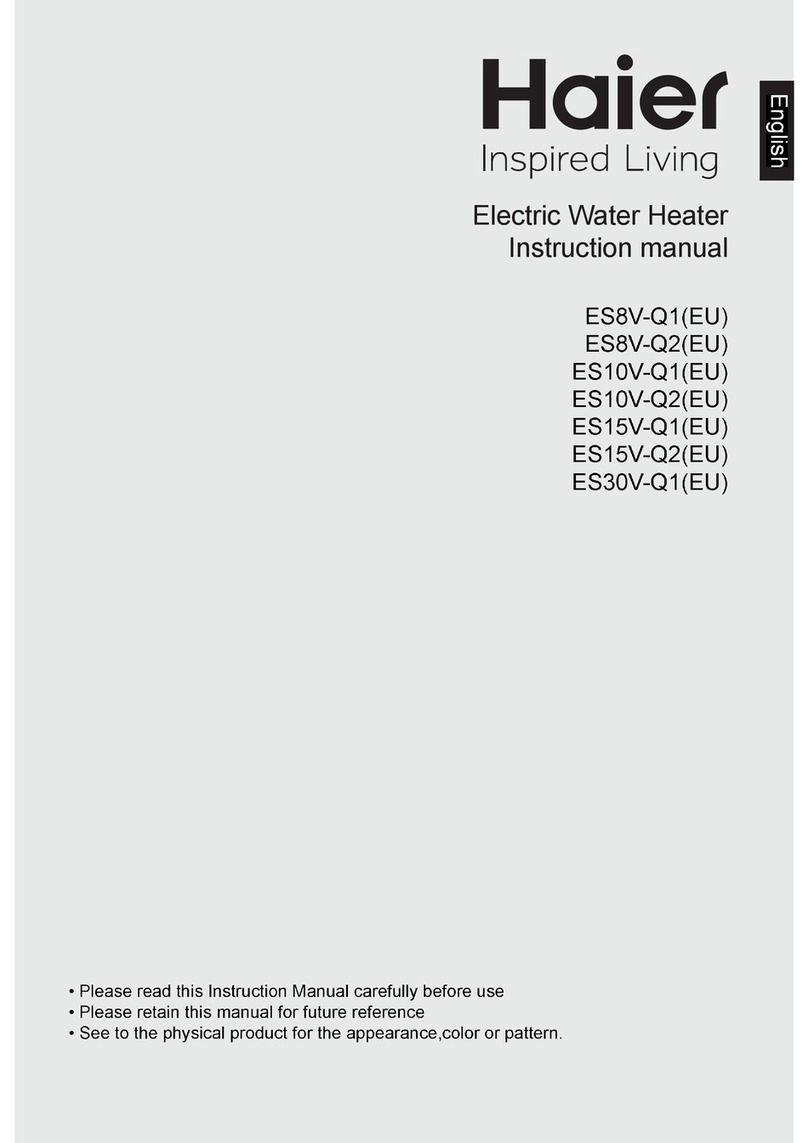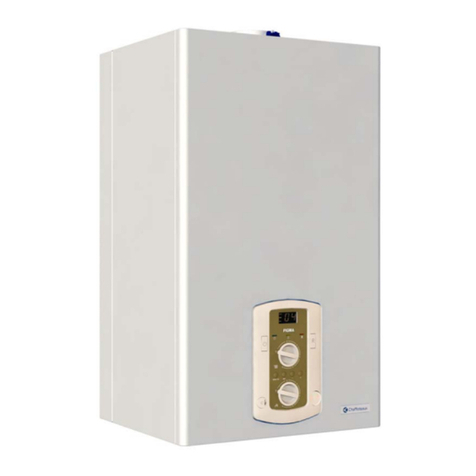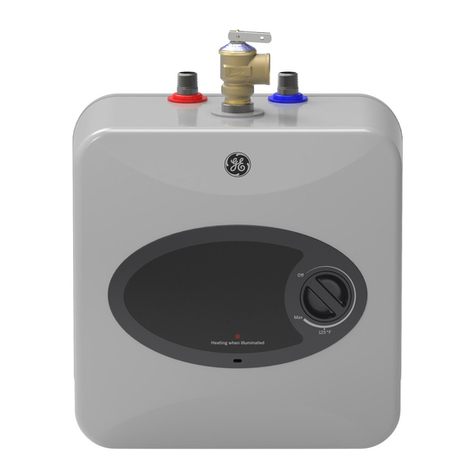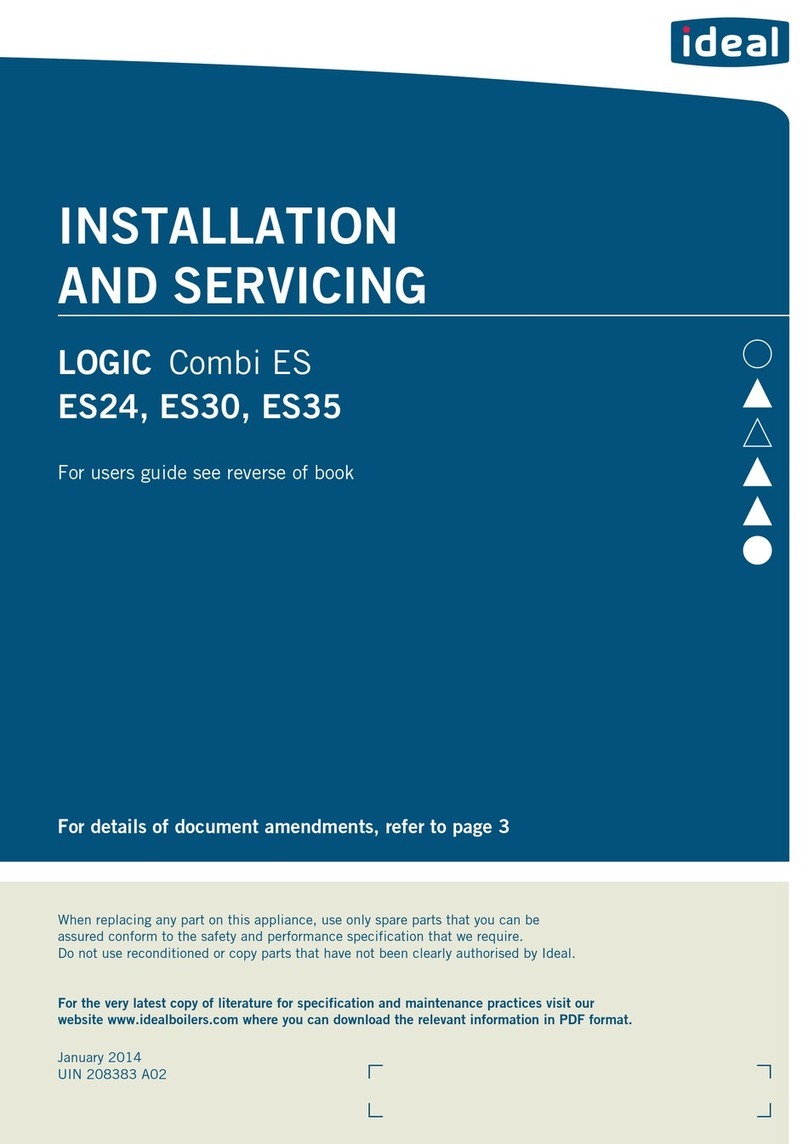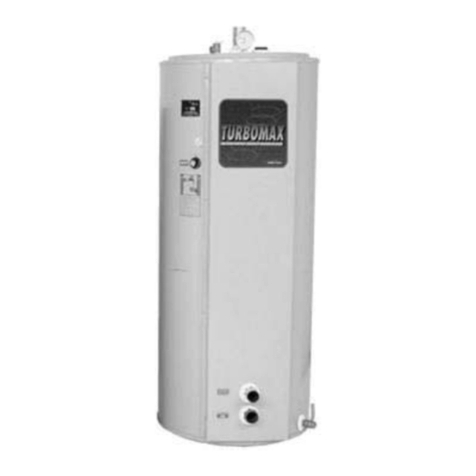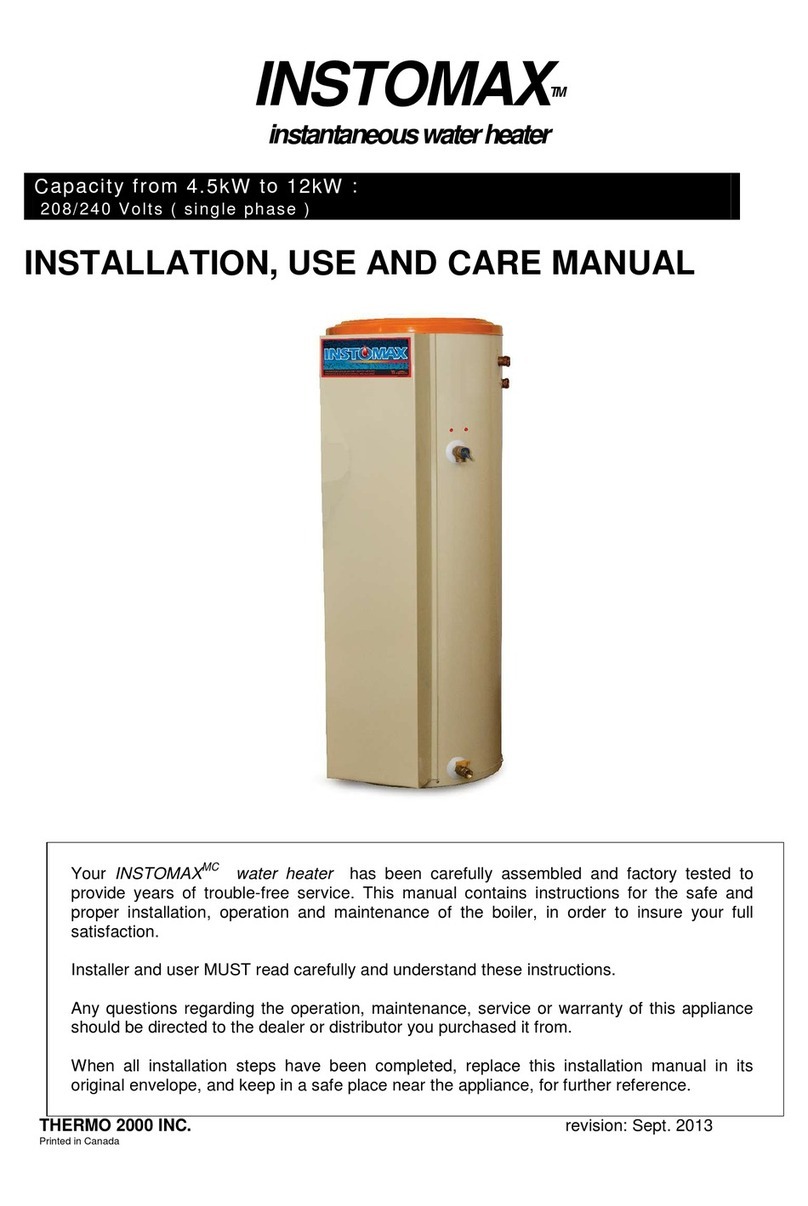TURBOMAX Use and Care Manual with Installation Instructions July 2014 Page
4
Introduction
The important safeguards and instructions
appearing in this manual are not meant to
cover all possible conditions and situations
that may occur. It should be understood that
common sense, caution and care are factors,
which cannot be built into every product.
These factors must be supplied by the
person(s) caring for and operating the unit.
LOCAL INSTALLATION REGULATIONS
This water heater must be installed in
accordance with these instructions and must
conform to local, or in the absence of local
codes, with the current edition of the National
Plumbing Code and the National Electric Code.
In any case where instructions in this manual
differ from local or national codes, the local or
national codes take precedence.
DECISIONS REQUIRED BEFORE
INSTALLATION
The tank of the Turbomax water heater (boiler
water) is factory shipped with a 30psi (207kPa)
pressure relief valve except on models109,
65ASME and 109ASME where it is factory set at
50psi (344kPa). If the water application requires
a higher operating pressure on the tank and If
local jurisdictions permit it, this valve can be
change by a higher pressure rated valve (max
150psi or 200psi on ASME models). But, on an
installation used to provide hot water for
domestic use, the tank pressure must always
remain lower than the pressure of the domestic
water supply specially on applications where a
potentially toxic heat transfer solution is used
inside the Turbomax tank
In some jurisdictions the boiler’s operating
pressure must be limited to 30 psi (207 kPa) by
a safety relief valve. When a higher operating
pressure level is needed, select a boiler which is
certified to operate at the required pressure.
The boiler’s output rating must be within the
heater’s recommended sizing guide
specifications. Too high an output rating may
cause a boiler short cycling condition.
Where the boiler’s output is used to supply
space heating and domestic water heating, two
options are available when wiring the controls.
The first option uses a priority relay. When the
aquastat of the water heater calls for heat, the
relay shuts off the space heating zones, giving
priority to producing domestic hot water. Any
demand for space heating is postponed until the
water heater has reached a preset level. This
delay in supplying the space heating zones is
usually not noticed by those occupying the living
space. The water heater gets adequate hot
water flow from the boiler to maintain the full
rated delivery of domestic hot water.
In the second option, the water heater will be
supplied as just another heating zone. This
means that if all space heating zones call for hot
boiler water at the same time, the water heater
may not be supplied with enough hot boiler
water to “recover” adequately. The delivery of
domestic hot water will be diminished. This is
not a problem when the boiler output is sized
adequately for both loads.
The flow of hot boiler water to the water heater
can be controlled with either a pump or a
motorized valve. If a zone valve is to be used,
the space heating system circulator must have
an adequate flow rate to allow proper heat
transfer of BTUs from the hot boiler water stored
in the tank to the domestic water flowing inside
the water heater’s heat exchanger. Be sure the
space heating zone valve chosen has maximum
pressure drop to insure proper boiler water flow
to the heater. The recommended way to provide
adequate boiler water flow through the water
heater is to use a separate dedicated circulator.
This option may be used even though the
heating system utilizes zone valves.
The heat transfer medium must be water or
other non-toxic fluid having a toxicity rating
or class of 1, as listed in Clinical Toxicology
of Commercial Products, 5
th
edition
LOCATION
The water heater should be installed in a clean,
dry location as close as practical to the boiler or
the heat source. Long hot water lines should be
insulated to conserve water and energy. The
water heater and water lines should be protected
from exposure to freezing temperatures.
TURBOMAX
®
water heaters must be installed
vertically. Use the adjustable feet to level the
unit.
The water heater must be located or protected
so it is not subject to physical damage, for
example, by moving vehicles, area flooding, etc.
WARNING
!
CAUTION
!






















